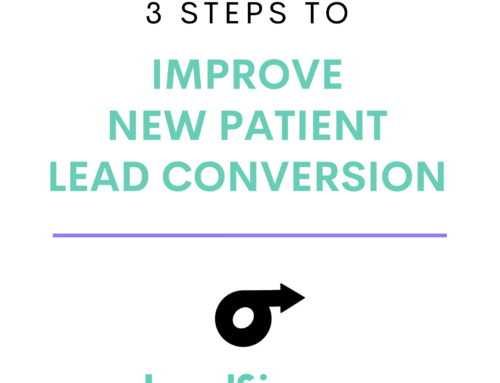In the fast-paced world of orthodontics, the key to a thriving practice and orthodontic practice growth lies in one fundamental marketing concept—understanding your buyer. In this article, we’ll delve into the importance of intimately knowing your target audience and provide you with a practical guide to defining your ideal buyer.
Why Understanding Your Buyer Matters
1. Precision Marketing
Understanding your buyer allows you to move beyond generic marketing strategies. Instead of casting a wide net with a shotgun approach, precision marketing becomes your focus. By tailoring your efforts to the specific needs and preferences of your target audience, you increase the efficiency of your marketing initiatives.
2. Informed Decision-Making
From digital platforms to advertising content, location decisions to event sponsorships, every marketing choice becomes clearer when you intimately know your buyer. No longer will you make decisions based on guesswork; instead, you’ll have a solid understanding of what resonates with your potential patients.

Defining Your Target Buyer
To unravel the mystery of your buyer, follow these simple steps:
Step 1: Who Are They?
Identifying the ideal patient is a critical aspect of an orthodontist’s success. To pinpoint this target audience, orthodontists can start by analyzing their existing patient base and identifying common characteristics among their most satisfied and engaged clients. Demographic details such as age, occupation, and location can provide valuable insights.
Conducting surveys or seeking direct feedback during consultations can help uncover patients’ motivations, concerns, and preferences. Understanding the specific orthodontic needs and treatment goals of the current satisfied patients enables orthodontists to tailor their services and marketing efforts to attract similar individuals.
Step 2: What Do They Care About?
Delving into the pain points and desires of your target audience as an orthodontist is pivotal for building a patient-centric practice. Recognizing the concerns and challenges individuals face when seeking orthodontic care provides a foundation for tailoring services to meet their specific needs. Common pain points may include aesthetic concerns, discomfort, or financial considerations.
Equally important is understanding the desires of your audience, which could range from achieving a confident smile to minimizing treatment duration. By empathizing with these aspirations and concerns, orthodontists can craft personalized treatment plans and communication strategies that resonate with their target audience. This patient-centered approach not only enhances the overall patient experience but also forms the basis for building lasting relationships, fostering trust, and ultimately, growing a successful orthodontic practice.
Step 3: Where Do They Spend Time?
To effectively connect with potential patients, orthodontists must keenly determine the online and offline spaces where their target audience congregates. Online presence is crucial in today’s digital age, and understanding the social media platforms, forums, or community websites where potential patients engage can inform strategic marketing decisions. Whether it’s Instagram, Facebook groups, or popular health forums, being present on these platforms allows orthodontists to share valuable content, engage with the community, and build brand awareness.
Offline spaces, such as local community events, schools, or health fairs, are equally important for reaching potential patients. Sponsorships or participation in these events provide opportunities for face-to-face interactions and networking. By identifying and actively participating in the spaces where their audience spends time, orthodontists can effectively position their practice in the forefront of potential patients’ minds, fostering trust and credibility within the community.
Step 4: How Do They Consume Media?
Orthodontists can enhance their outreach and engagement by astutely exploring the media channels preferred by their new patient audience. Recognizing the diverse ways individuals consume information is pivotal in crafting effective communication strategies. Some patients may gravitate towards visual content on platforms like Instagram or TikTok, while others may prefer informative articles or blogs shared on websites or newsletters.
Conducting surveys, analyzing social media analytics, and staying abreast of industry trends can help orthodontists pinpoint the preferred media channels of their target audience. By tailoring content to align with these preferences, whether through captivating visuals, educational videos, or informative blog posts, orthodontists can establish a compelling online presence that resonates with potential patients, fostering engagement and trust in the process.
Turning Insights into Action
Once you’ve filled out the buyer profile, it becomes your compass in navigating the marketing landscape. Here’s how to use your newfound insights:
Digital Platforms:
- Invest in platforms that align with your buyer’s preferences. If they’re avid Instagram users, focus on visual content strategies.
Ad Content:
- Craft advertisements that speak directly to your buyer’s pain points and desires. Tailor your messaging to resonate with their specific needs.
Location Decisions:
- Consider your buyer’s demographics when deciding where to establish or move your practice. Ensure accessibility for your target audience.
Swag and Event Sponsorships:
- Choose promotional items and events that appeal to your buyer’s interests. Align your branding efforts with what resonates most with them.
Orthodontic Practice Growth
Understanding your buyer is not just a marketing task—it’s a transformative strategy that refines your approach and maximizes your impact to achieve orthodontic practice growth. Take the time to fill out the buyer profile, print it off, and tape it to the wall next to your desk. This simple sheet of paper will become your most valuable marketing asset, guiding your decisions and propelling your orthodontic practice toward unprecedented growth.










Leave A Comment